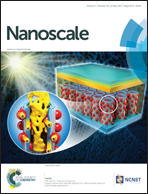Photo-fluorescent and magnetic properties of iron oxide nanoparticles for biomedical applications
Abstract
Iron oxide exhibits fascinating physical properties especially in the nanometer range, not only from the standpoint of basic science, but also for a variety of engineering, particularly biomedical applications. For instance, Fe3O4 behaves as superparamagnetic as the particle size is reduced to a few nanometers in the single-domain region depending on the type of the material. The superparamagnetism is an important property for biomedical applications such as magnetic hyperthermia therapy of cancer. In this review article, we report on some of the most recent experimental and theoretical studies on magnetic heating mechanisms under an alternating (AC) magnetic field. The heating mechanisms are interpreted based on Néel and Brownian relaxations, and hysteresis loss. We also report on the recently discovered photoluminescence of Fe3O4 and explain the emission mechanisms in terms of the electronic band structures. Both optical and magnetic properties are correlated to the materials parameters of particle size, distribution, and physical confinement. By adjusting these parameters, both optical and magnetic properties are optimized. An important motivation to study iron oxide is due to its high potential in biomedical applications. Iron oxide nanoparticles can be used for MRI/optical multimodal imaging as well as the therapeutic mediator in cancer treatment. Both magnetic hyperthermia and photothermal effect has been utilized to kill cancer cells and inhibit tumor growth. Once the iron oxide nanoparticles are up taken by the tumor with sufficient concentration, greater localization provides enhanced effects over disseminated delivery while simultaneously requiring less therapeutic mass to elicit an equal response. Multi-modality provides highly beneficial co-localization. For magnetite (Fe3O4) nanoparticles the co-localization of diagnostics and therapeutics is achieved through magnetic based imaging and local hyperthermia generation through magnetic field or photon application. Here, Fe3O4 nanoparticles are shown to provide excellent conjugation bases for entrapment of therapeutic molecules, fluorescent agents, and targeting ligands; enhancement of solid tumor treatment is achieved through co-application of local hyperthermia with chemotherapeutic agents.


 Please wait while we load your content...
Please wait while we load your content...